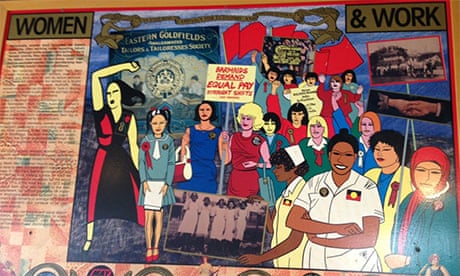It can take a while for new ideas to catch on in feminism. It took the better part of 20 years for Betty Friedan to stop demonising lesbians as the "Lavender Menace", an hilarious epithet that the lesbians in question immediately adopted as their official name. More recently, it's now been over two decades since legal scholar Kimberlé Crenshaw wrote her original paper coining the term "intersectionality", and mainstream feminism is still in the throes of a massive storm around it.
Intersectionality has been variously described as meaningless, too radical, and a threat to the sisterhood. This level of backlash from those who hold power within feminism is usually a pretty good sign that the target of their ire is something worthwhile.
Crenshaw coined the term as an explanation of why black and immigrant women's experiences ended up being ignored by both feminism and the anti-racist movement. Her original paper contains dozens of stories detailing how domestic violence and rape crisis facilities had serious trouble helping these women because their cases were "too complicated". Those were immigrant women who were too afraid of deportation to use legal redress against their abusive husbands, women who spoke a language other than English and weren't given access to an interpreter, or staff who had no idea how to handle a victim whose cultural background forbid her to acknowledge an abuser within her family for fear of damaging the family's honour.
These examples reveal an emergent feature of many more institutions than rape crisis centres in the 1980s. The problem is not that the individual women who ran these centres were racist, but that the entire structure tended to produce outcomes that were much worse for women of colour – and that's something we can see playing out over and over within feminism and women's services. Unless feminism goes hard down the road of recognising and including women from many differing backgrounds, the path of least resistance is for it to work mostly on behalf of women who are already relatively privileged.
If feminism doesn't actively recognise that there are a lot of women whose most pressing concerns aren't boardroom representation and lingerie football, the movement is going to carry on alienating itself from those most in need of assistance. That's not to say lingerie football isn't the purview of feminist analysis, because it certainly is, and this is not an attack on individual feminists who speak on these issues. We have to take a much broader view, and ask ourselves why the issues that get the most attention – the ones we're most keen to talk about and analyse – are the ones that mostly affect those of us who look like Friedan.
When intersectionality is derided as inaccessible, the type of woman feminism claims to speak on behalf of is made narrower and narrower. Are we really going to say that an idea non-white, poor, and disabled women have identified as one of their most valuable activist resources, a concept the Australian Human Rights Commission acknowledges is a crucial tool for change is useless and half-baked? Is the Australian Institute of Social Relations merely promoting feminist infighting when they release an information pack explaining why intersectionality is crucial within social movements to end violence against women?
Popular feminism's refusal to grasp what is actually a brilliant and elegant concept looks more and more like Friedan's demonisation of the Lavender Menace: a privileged minority persistently embarrassing itself by refusing to crack a book sometime, wandering around with its eyes closed banging off the walls.
Interestingly, intersectionality has also been going gangbusters within academic feminism for over a decade. Widely acknowledged as one of the most important ideas that feminist scholarship has ever come up with, the amount of writing and research dedicated to exploring and applying it to produce a more inclusive feminist politics is enormous. Like the word "feminist" itself, there is disagreement about exactly what it means, but that's par for the course in any developing ideology.
So why is it taking so long for mainstream feminists to follow? Why are discussions of race, class, and disability within feminism so often characterised as infighting, or sideshows to the main event? Could it be that, for some strange reason, marginalised women's experiences with intersectionality and its usefulness are systematically ignored and discredited? Far from being some bizarre esoteric theory, intersectionality is alive and kicking all around us, and not just in exclusive ivory tower gender studies clubs. Call me a conspiracy theorist, but there must be some reason pop feminism puts so much effort into repressing a concept that has huge theoretical explanatory power and enormous utility as an organising strategy.
Feminists need to take a long, hard look at why so much of our effort is being expended on making up reasons why we can't possibly be expected to help the least privileged women among us. So much for sisterhood.

